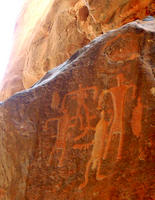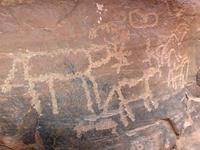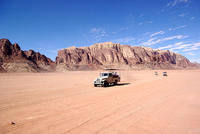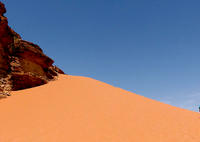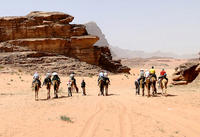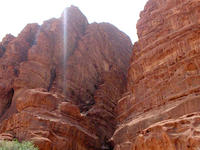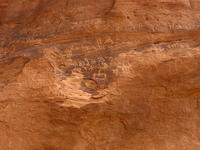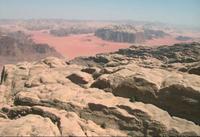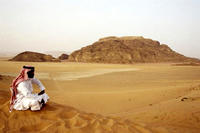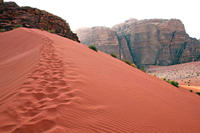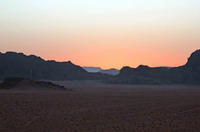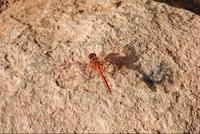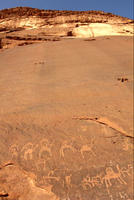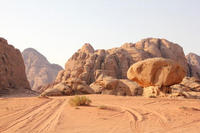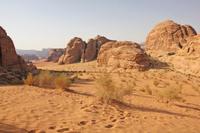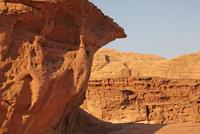You are in: Middle East -> Jordan -> Wadi Rum Protected Area, and traditional search or Image Gallery will yield results of this site only
Wadi Rum Protected Area
| Site number: | 1377 |
|
| Type of site: | Mixed | |
| Date: | -10000 BC | |
| Date of Inscription: | 2011 | |
| Location: | Middle East, Jordan, south Jordan | |
Up to 75 images are shown here. Click on each for more details or on Image Gallery for more images.
| Description: | The 74,000-hectare property, inscribed as a mixed natural and cultural site, is situated in southern Jordan, near the border with Saudi Arabia. It features a varied desert landscape consisting of a range of narrow gorges, natural arches, towering cliffs, ramps, massive landslides and caverns. Petroglyphs, inscriptions and archaeological remains in the site testify to 12,000 years of human occupation and interaction with the natural environment. The combination of 25,000 rock carvings with 20,000 inscriptions trace the evolution of human thought and the early development of the alphabet. The site illustrates the evolution of pastoral, agricultural and urban activity in the region. --WHMNet's description is from WHC Site, where additional information is available. | |
| Wadi Rum (Arabic: وادي رم) also known as The Valley of the Moon (Arabic: وادي القمر) is a valley cut into the sandstone and granite rock in south Jordan at 60 km to the east of Aqaba. It is the largest wadi in Jordan. The name Rum most likely comes from an Aramaic root meaning 'high' or 'elevated'. To reflect its proper Arabic pronunciation, archaeologists transcribe it as Wadi Ramm. The highest elevation in Wadi Rum is Mount Um Dami at more than 1800m above sea level. HISTORY: Wadi Rum has been inhabited by many human cultures since prehistoric times, with many cultures–including the Nabateans–leaving their mark in the form of rock paintings, graffiti, and temples. As of 2007[update], several Bedouin tribes inhabit Rum and the surrounding area. In the West, Wadi Rum may be best known for its connection with British officer T. E. Lawrence, who based his operations here during the Arab Revolt of 1917–18. In the 1980s one of the rock formations in Wadi Rum was named "The Seven Pillars of Wisdom" in memory of Lawrence's book penned in the aftermath of the war, though the 'Seven Pillars' referred to in the book actually have no connection with Rum. The area centred on Wadi Rum (the main valley) is home to the Zalabia Bedouin who, working with climbers and trekkers, have made a success of developing eco-adventure tourism, now their main source of income. The area around Disi to the NE, home to the Zuweida Bedouin and erroneously also thought to be part of Wadi Rum by visitors, caters more for Jordanian visitors from Amman, with campsites regularly used by party-goers. --Wikipedia. Text is available under the Creative Commons Attribution-ShareAlike License. | ||
| Source: | http://whc.unesco.org/en/list/1377 | |
| Reference: | 1. UNESCO World Heritage Center (http://whc.unesco.org/en/list/1377). 2. Wikipedia. | |






